The next snowboard season is almost here! I can’t wait to get back to the winter playground! If you are anything like me – meaning a snowboard addict – I bet you already checked your snowboarding gear – snowboard, helmet, goggles, jacket, padded shorts, pants, first layer, second layer – to make sure everything is in place and ready!
But what about your body, is it in good shape and ready to help you make the best out of the winter season? I still remember how destroyed my body felt when starting a snowboarding season without physical conditioning.
After the first day on the slopes, I discovered new muscles I didn’t know I had! Due to sore muscles, snowboarding for two days in a row was virtually impossible! Lesson learned, let’s show our body the care it deserves and get snow fit!
Developing stamina, endurance, strength, balance, and flexibility for sustained effort during cold days in the mountains will make your ride much more enjoyable.
The good news is you can improve your physical condition by including in your workouts specific exercises to prepare your body for snowboarding.
This article contains some of the most efficient bodyweight exercises specially designed for this purpose.
The best part is that you can train anywhere and anytime – you don’t need a gym or fitness equipment – you just need a yoga mat and your good energy to make it happen. Let’s get moving!
How to Train for Snowboarding
Remember, preparing your body for snowboard action will ease your progress no matter if you plan to land new tricks in the snow park, you just want to cruise the slopes or explore the deep powder off-piste.
If you set out the objective to train for the next riding season, plan to add to your calendar at least 2 workouts per week designed to prepare your body for snowboarding. It’s important to schedule this time in your calendar, this way, you commit to yourself to prioritize your well-being and take care of your health.
The workout should include, besides the actual exercises; a short warm-up session in the beginning and a stretching session at the end for each riding session. Your body will be thankful for it!
Pro tip: Before every riding session, make sure you warm up your joints – this way you will be more responsive to whatever the mountain is throwing at you. Also, you’ll be able to prevent injuries. For faster recovery, after riding, you should include a short stretching routine
Exercises for Snowboarding
Before describing each exercise of your snowboard preparation, let’s talk about the warm-up. It’s an essential part of your workout but also of your riding routine, so we can’t skip it.
A basic warm-up routine includes most of your joints; an easy way to remember the sequence is to start standing, warming up your neck & cervical area, and follow down your joints throughout your body: shoulders, elbows, wrists, waist, hips, knees & ankles.
After warming up, you can tackle the following exercises to improve your overall fitness level to get ready to shred:
Squats
Why?
The squat is a key exercise when training for snowboarding. Squats strengthen nearly all of the lower body muscles required for snowboarding: quadriceps, hamstrings, hip flexors, calves, and gluteal muscles (buttocks).
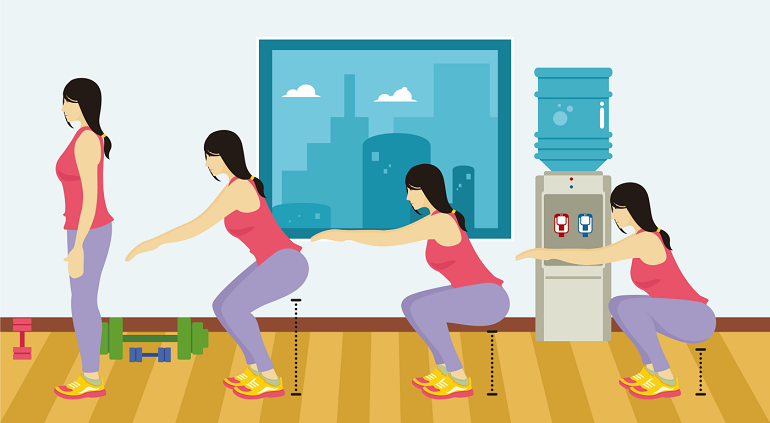
How to Do It
- Stand with your feet shoulder-width apart.
- Keep your toes and knees pointing outward.
- Make sure your back is straight, avoid arching it.
- Sit down as if you’re sitting on a bench, then stand up again.
- Do this slowly for maximum strength building.
Squat Variations
Jump Squats
Why?
Jump squats enhance your natural ability to explode off the ground and prepare you for intense jumps; it improves your endurance.
How to Do It
- Start with your legs shoulder width apart.
- Compress your legs, so you’re in a deep squat position with your hands by your side, knees slightly bent.
- From this position, explode straight up into the air thrusting your arms straight above your head towards the ceiling.
- When you land, go straight into the squat position again and repeat.
Squat Pulses
Why?
Squat pulses help build muscular endurance in your quadriceps, glutes, and lower back, so you can stay low and controlled for as long as possible.
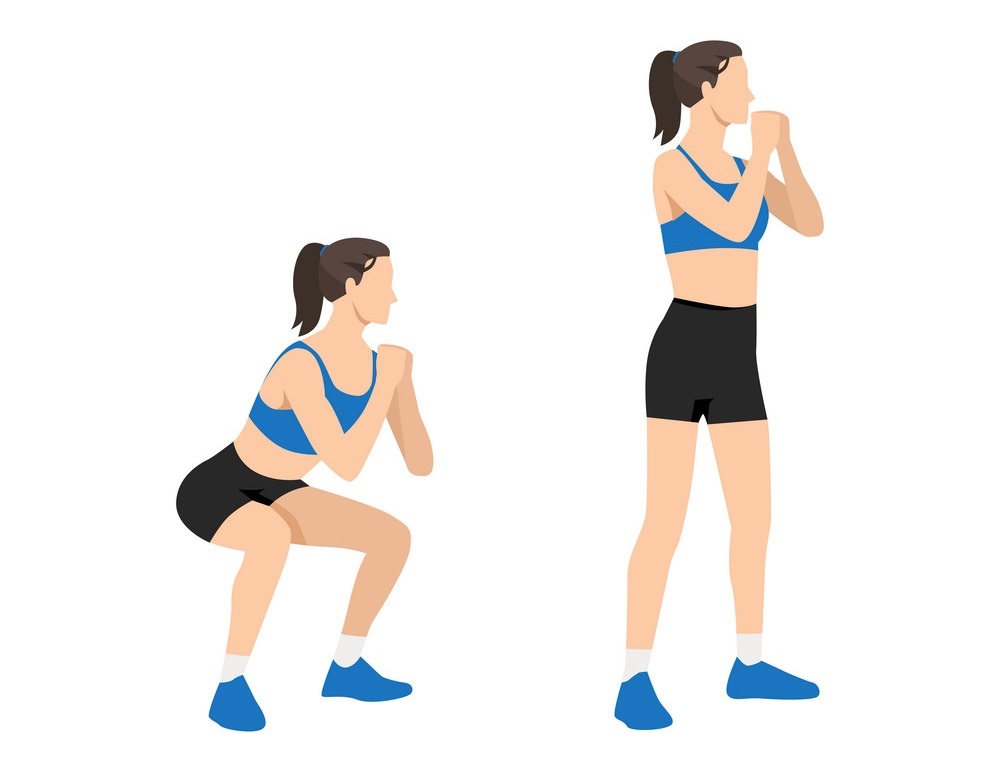
How to Do It
- Start with your legs shoulder width apart.
- Compress into a deep squat position.
- From the squat position, pulse up and down.
- For a real challenge, hold a weight (could be a water bottle) against your chest whilst performing the pulses.
Squat Reverse Lunge
Why?
This exercise will get you into your riding stance and challenge your quads, glutes, and hamstrings.
How to Do It
- Stand with your feet shoulder-width apart.
- Squat like you’re sitting back in a chair.
- Stand up and step the right leg back into a reverse lunge. Your knees should be at a 90-degree angle to the floor. Do not let your knees go inward; keep them in line with your feet.
- Return to the squat position and repeat on the left leg.
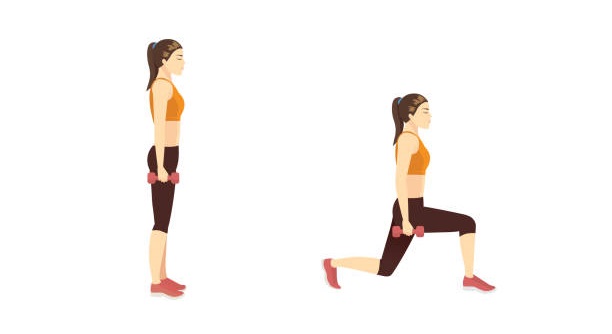
Squat with Heel/Toe Raise Exercise
Why?
This exercise strengthens your calves, shins, and ankles, which you’ll use to get on your toe side and heel side edges.
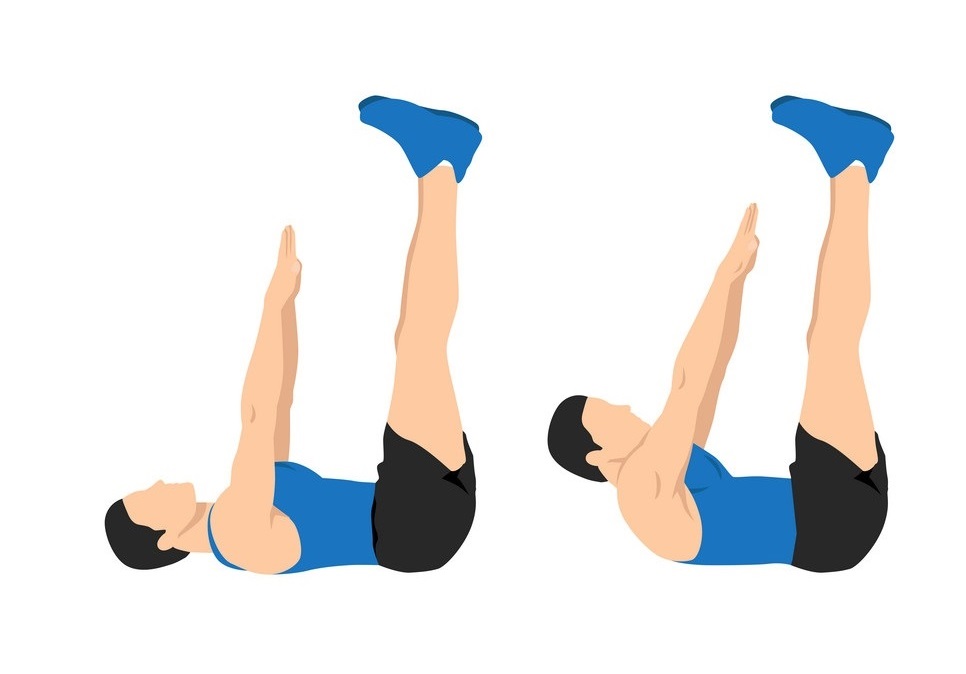
How to Do It
- Start with your feet shoulder-width apart and then squat down like you are going to sit in a chair. Your thighs should aim to be parallel with the ground. Try to keep your back straight and look forward.
- Lift both heels off the ground at the same time and then lower them.
- Then lift both toes up at the same time and lower them.
- Alternate between heel and toe raises.
Plank to Side Plank
Why?
One of the most important areas to work on to improve your snowboarding is your muscles core strength. This exercise is great for abdominal strength and also improves your balance.

How to Do It
- Start in the plank position – resting on your forearms and toes.
- Make sure your body is forming a straight line from shoulders to ankles, holding a straight back.
- Engage your core by sucking your belly button into your spine and keeping everything tight.
- From plank position, turn onto your side and rest on left-hand elbow.
- Place the right hand on your hip.
- Keep your body in a straight line, and make sure you keep your hips up.
- Hold this for 5 seconds before returning to the starting position.
- Switch sides.
Banded Hip Circle Walks
Why?
This exercise is a great hip and glute activation exercise, building hip flexor and glute strength.
How to Do It
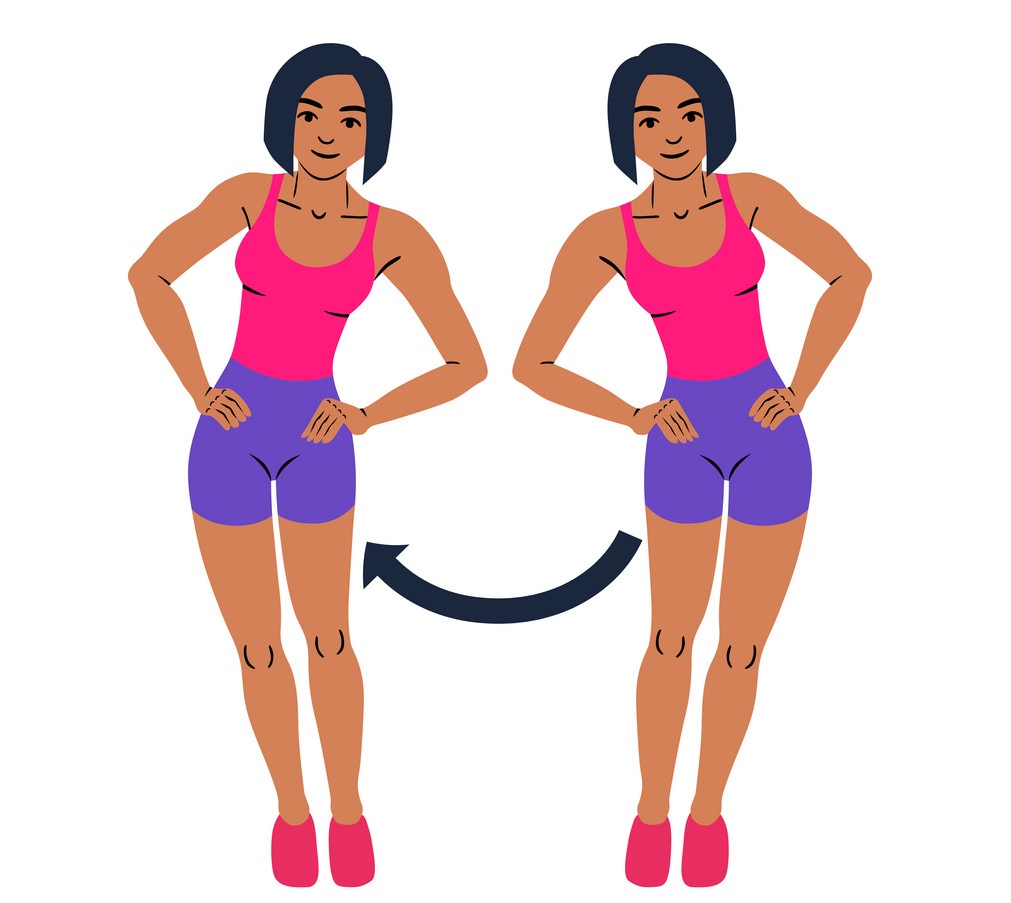
- Take a small resistance band, step into it, and position it right above your knees.
- From this position, take large, slow steps forward.
- Bring your back foot across your midline, and then step out wide when you plant your foot.
- Step using the other foot.
Banded Hip Circle Walks Variations
You can use the same resistance band, stepping side to side and backward.
Push-up with Lateral Movement
Why?
This exercise uses the biceps, triceps, and deltoids. It also engages the core. Strengthening these core muscles will help with any upper body movements during snowboarding

How to Do It
- Assume a push-up position with legs extended, feet hip-width apart, balanced on your toe with legs straight.
- Bend your elbows out to the back and lower your chest toward the floor until your arms are bent 90 degrees.
- Straighten arms, then step to the side with your left arm and leg, followed by your right arm and leg
- From this position, perform a push-up.
- Then move back to the right.
- Repeat the exercise on the other side
Single-Leg Dumbbell Rear Fly
Why?
This exercise will make your upper body (chest, shoulders, back, arms) stronger. If you fall on a snowboard, having a strong upper body is going to help you get up quicker.
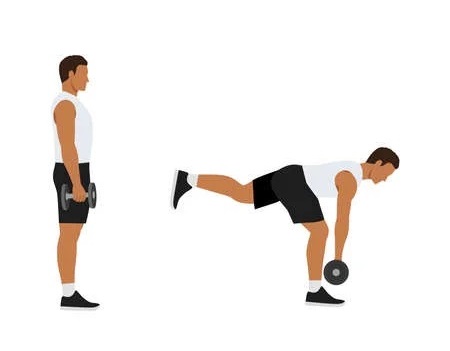
How to Do It
- Stand with feet hip-width apart with dumbbells at your sides (you can use two water bottles instead of dumbbells), palms facing in.
- Balance on your left foot and bend at the waist, allowing your right foot to lift and your front knee to bend slightly.
- Let your arms hang toward the floor, palms facing each other.
- Squeeze your shoulder blades together and raise the dumbbells up and out until the weights are at chest level.
- Reverse the move back to start.
- Switch legs, repeat on your right foot.
Conclusion
It’s up to you how you mix these exercises to get a customized workout tailored to your needs. We recommend starting gradually, executing each exercise slowly, and focusing on maintaining a correct form.
In the first snowboarding workout, you can do 10-15 repetitions for each exercise with a short break in between. As you get used to the routine, you can add more repetitions and shorten the rest intervals.
The suggested workout helps you perform at your best while snowboarding and will ensure you prevent injury.
Follow this fitness routine, and you’ll be ready to play in the snow in no time!
0 Comments